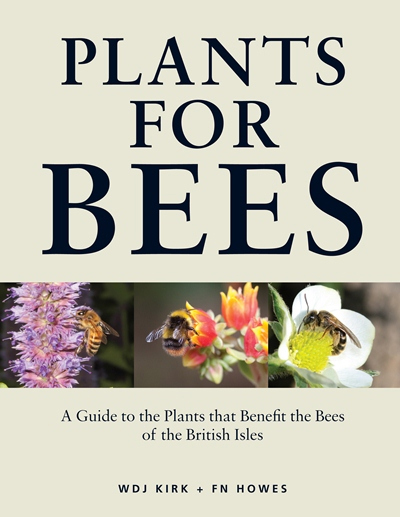Plants for Bees
It is not often that a book that so emphatically links bees and the flowers that support them comes along. IBRA are to be congratulated in publishing this lavishly illustrated hard bound book, and for keeping the price (at £25) well within the "Christmas Present" bracket.
The book is divided into a number of sections, including plants for honeybees, bumblebees and solitary bees. The authors of these sections (Norman Carreck, Jane Stout and Chris O'Toole) are all recognised authorities on their subjects, and they present the overall picture and information in such a way as to appeal to all; beginners, and afficionados alike. The second half of the book (authored by William Kirk and the late Norman Howes) deals with the plants themselves, and the high standards of writing and design are maintained throughout.
At the end of the book is a section with suggestions for further reading and a list of NGO's with an interest in bees and bee-plant interactions as well as a full index.
As is usual with a book of this size (over 300 pages) a few errors seem to have crept in: a handful of misidentifications of bees, and a statement about the status of the Violet Carpenter-bee (Xylocopa violacea) which it claims is "a spreading recent arrival" in UK (almost certainly a vagrant with no firm evidence of establishment). I also noticed that the bee Chelostoma florisomne is listed as a specialist on Asteraceae (it is actually on Ranunculus). However, these very minor blemishes do not detract from what is likely to be regarded as the standard work on bees and their relationships with plants for many years to come.
I would also like to commend the photographers (many of whom are BWARS members) for the superb quality of the photographs, and to the designers for making the entire work look so appetizing.
This book will appeal to naturalists, gardeners, photographers in addition to bee people and botanists. I wholeheartedly recommend it
Stuart Roberts
October 2012


